Stay on the trail. Look, don’t touch. Take only photographs, leave only footprints.
These and similar rules have become a standard component of a refined environmental ethic; any reasonable outdoor education class is going to emphasize them.
I have a confession to make: As a kid I violated every one of those rules, frequently and without guilt. It made me a conservationist.
I roamed freely through the woods and fields. I caught lightning bugs. I turned over rocks to find crayfish. I trapped tadpoles in cups. I followed animal tracks. I built forts and dammed creeks. I dug holes. I chased things.
None of this lessened my respect for the natural world. Quite the opposite. Instead, I wanted to spend every minute I could out there. It started a lasting love for wild things and wild places that has never abated. I suspect I’m not alone in this.
In contrast, a lot of today’s outdoor education focuses on facts, often presented in the context of the earth’s doom and gloom future. An underlining message of this is that nature is separate from humanity and oh-so fragile, something we must never mess with. While the information may be alarming, it’s hardly the way to instill love. It instead makes nature boring, even dreary.
You probably have heard the complaints that kids are not playing outside, are not interested in the natural world. There’s even a term for this, coined by Richard Louv: Nature Deficit Disorder. And yet we insist on putting barriers up so that kids will not want to play in nature. I believe that free and wild play in nature is one of the missing ingredients in building a viable, effective conservation movement.
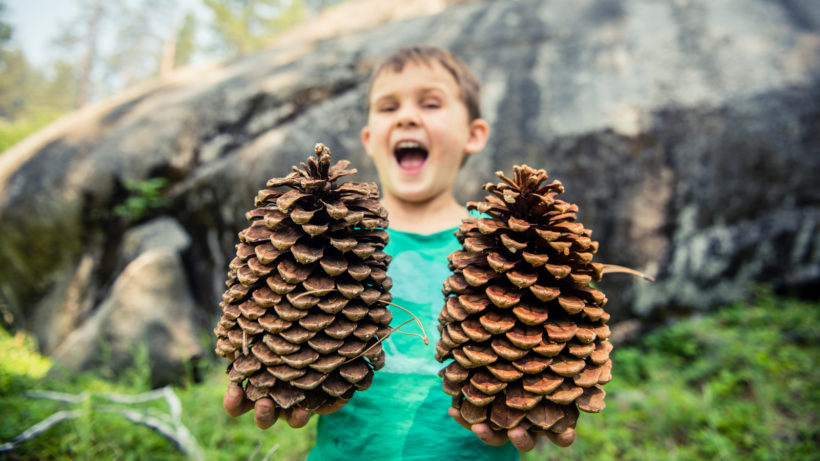
I’m not alone. Paleontologist and science communicator Scott D. Sampson spends a lot of time on this in his excellent book How To Raise A Wild Child. He notes:
“Fearing that we must protect nature and kids at all costs, we often do more harm than good. Nature connection depends on firsthand, multisensory encounters. It’s a messy, dirty business – picking leaves and flowers, turning over rocks, holding wriggling worms, splashing in ponds. Lacking such experiences, children’s growth is impoverished and they’re unlikely to care for, let alone protect, natural places.”
Conservation writer Emma Marris says that many of these well-intentioned rules endanger “the simple, unsupervised messing about in the woods that so many older adults remember fondly.”
In an article for Slate magazine, Marris writes of a boy who gets in trouble for taking gravel from a state park. Another ranger sees this and realizes, “More than feeling empowered or excited to protect the natural world, now he is going to associate going to state parks with getting into trouble.”
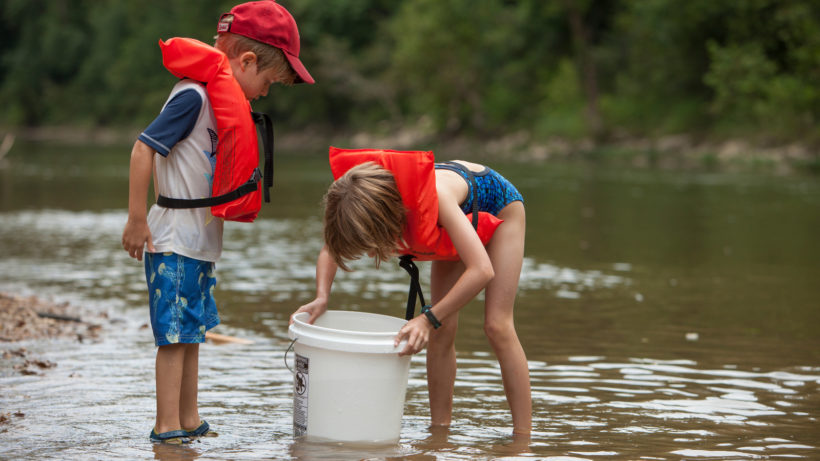
I can already hear the protestations: One kid catching frogs may not hurt anything, but what if every kid did it? Can’t you see the damage caused by unauthorized trails ripping through the wilderness? Doesn’t the natural world have enough to deal with without a bunch of people trampling it?
Such questions raise valid points, of course. Certainly no one advocating a more hands-on approach to nature believes that every national park should be a “free for all” where kids and adults do whatever they want. Conservationists like Sampson and Marris never suggest kids pick endangered wildflowers or rip up sensitive habitats.
As kids, my brother and I caught and kept pet turtles. I would not do that with my son. With many turtle species in decline, keeping them as pets cannot be justified. In an increasingly crowded world, the reality is that there has to be regulations to protect wild things and wild places.
At one point in Yellowstone and other national parks, feeding bears was a favorite way to “connect” with nature. Today, we recognize that this activity is just plain stupid. It results in dead bears and dead humans. I’m not suggesting that everything we did in nature in the “old days” is justifiable today. Far from it.
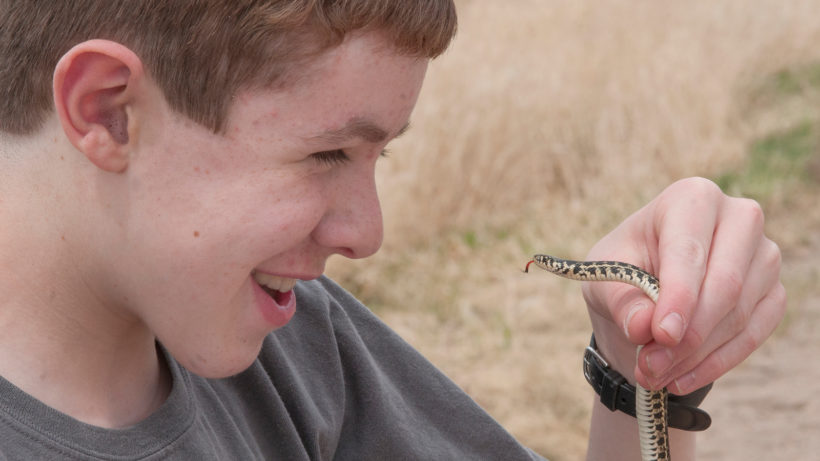
But what I see is this: For many environmentalists, the “look but don’t touch” philosophy has become a rule for its own sake. It doesn’t matter if a habitat is full of rare species or a weed-infested hillside, kids should not bother nature. Ever. And this indeed does more harm than good.
There is a 1970s science fiction novel by John Crowley called Beasts. Despite some outdated notions on genetic engineering, it should be required reading for all conservationists. In it, humans have just suffered a massive calamity. The remaining people decide that they’ve wreaked enough havoc on earth, and use their technological prowess to construct a giant, self-sustaining tower.
All humans live in this tower and never leave, for any reason. They leave the rest of the planet to nature. This way, people can no longer muck things up.
When I first read this book, I considered this a version of dystopian hell. I have slowly realized that, for many environmentalists, the vision in this book is aspirational. A prevailing philosophy is that we need to leave nature alone.
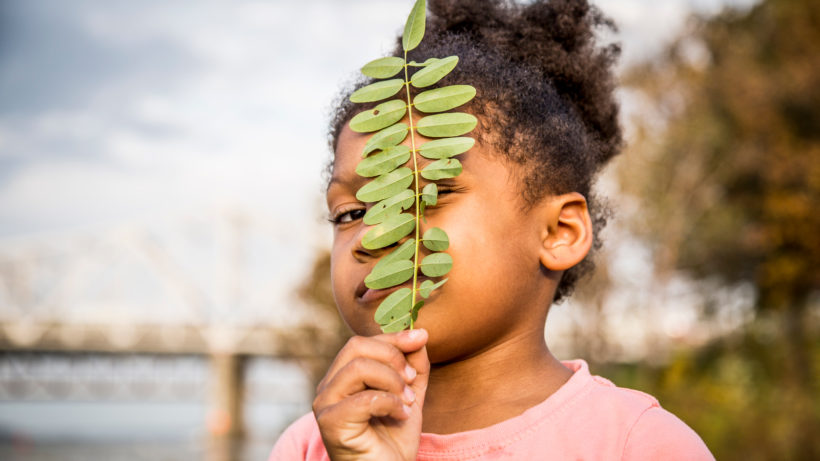
I see that even in comments to this blog, nearly every time I write about interacting with nature. If I write about fishing, I get notes stating it’s cruel. If I write about hunting shed antlers, I’m depriving rodents of their nutrients. Even a story featuring tips for spotting wolves and bears in Yellowstone generated this comment: “Protect these animals, respect and leave them alone! Just read about them and watch the videos!”
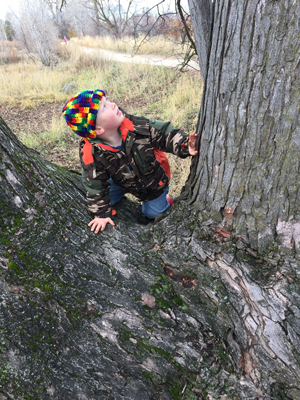
For me, and many others, it’s not enough to watch a nature documentary. And never will be enough. It also denies our human evolutionary history: for much of it, we were inextricably part of, not separate from, the natural world. We still are. Building a tower does not change the fact that we are part of this world, dependent on land, water, air and creatures for our survival.
Sampson argues in How To Raise A Wild Child that unstructured play in nature is essential for children. They need it for their physical and mental health, and their development. And the planet needs it, too. Roaming off the trail, flipping over rocks, causes kids to fall in love with nature. And that love makes conservationists.
The good news is that we can allow this unstructured, hands-on play without endangering species or trampling sensitive habitats.
There are still lots of natural places where kids can and should roam at will. Sampson advocates for wild playgrounds, with trees and brush rather than manicured lawns, and where kids are free to explore. There are many vacant lots, woodlots and parks that could easily allow free play. Conservation organizations could acquire lands specifically for kids, properties slated for development that instead could be open to the much lesser impacts of rock collecting and miniature dam building.
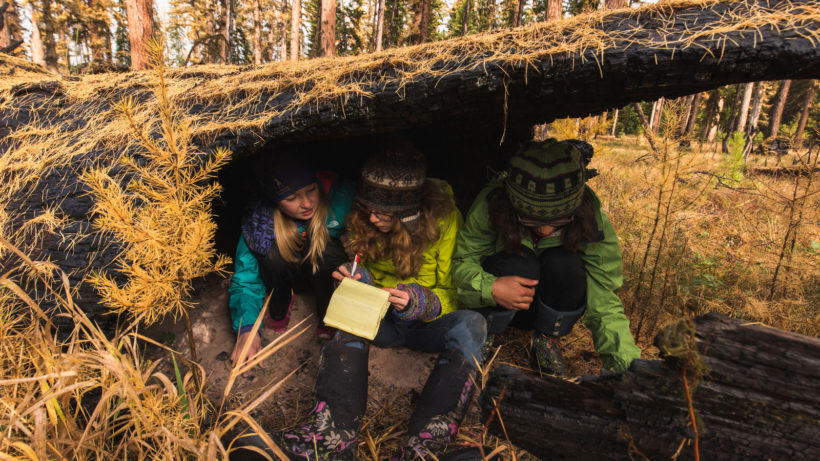
And, as Emma Marris writes: “There are 640 million acres of public land in the United States. Surely there’s room somewhere for a few lousy forts.”
And, in case you haven’t been paying attention, those public land acres are under imminent threat from people who want to sell them. We surely need more kids (and adults) playing on them, and connecting to them, not fewer. If no one goes there, then no one will even notice when these lands come on the auction block. That would be a far greater loss than anything wrought by a group of kids flipping rocks in a stream.

My wife and I are taking this hands-on approach to nature with our own toddler son. As Sampson suggests, our toddler keeps a “nature box” filled with items collected on our outings: sticks and stones and pine cones and bits of lichen. He catches and releases praying mantises and moths. He builds little castles along the river.
A recent weekend national forest snowshoeing adventure quickly got derailed. All that unpacked snow off the trail was just too inviting. We built a snowman, gathering fallen pine limbs and cones to make arms and buttons. As we played, my son suddenly pointed at a tree, “Tiny squirrel!” he exclaimed.
Indeed, a pine squirrel scampered down the trunk and into the snow. As my son giggled, I could see the beginnings of a lifelong fascination, a fascination that leads to love. That love does not come from a video or from environmental education. It comes from being out there as a participating member of this beautiful, awesome, still wild world.
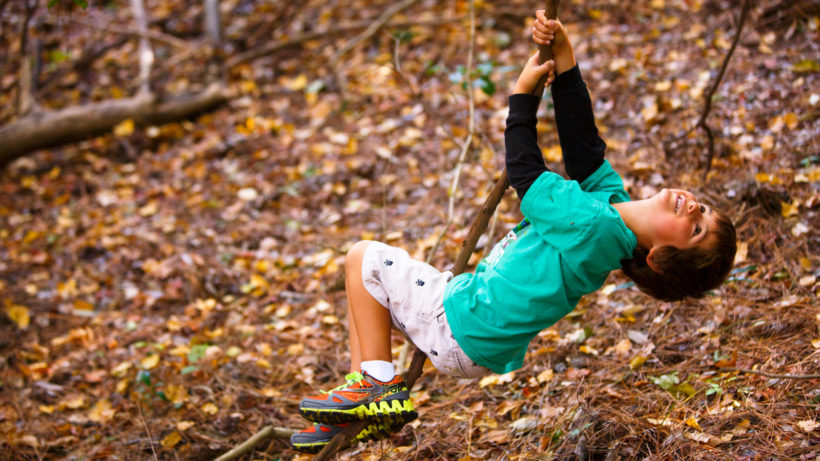
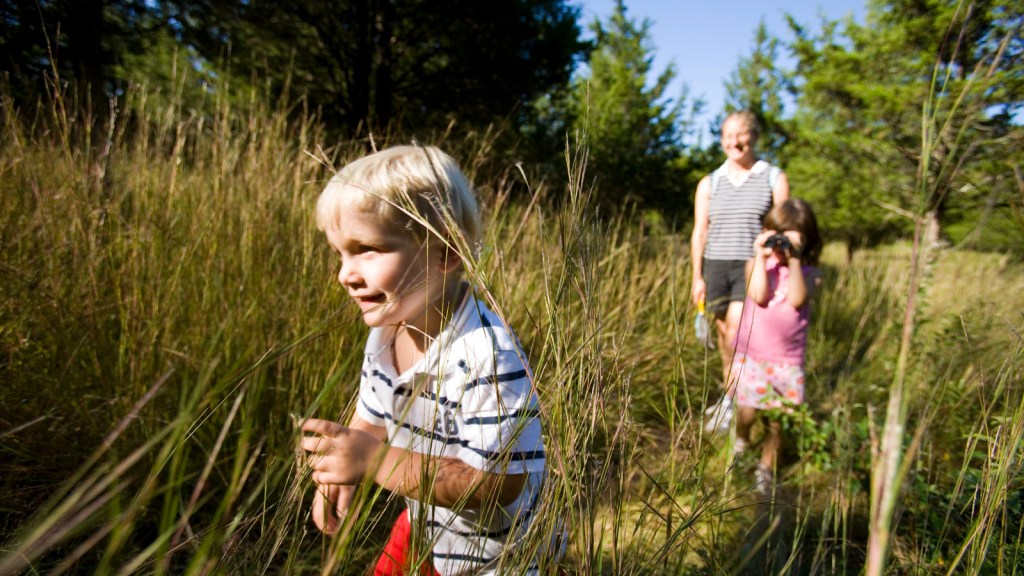



Love the article. Spending time in nature when young changes how you look at it. I live in an area with a good amount of public forests/land to hike, and I am forever grateful for that. I basically grew up in the woods. If we were inside in the summer it was because we were grounded!
My area also see’s a lot of “tourist” traffic from a nearby big city. The type of people who didn’t grow up in nature, so they have a lack of respect for it (not all of them!). But I have noticed that as the amount of ‘tourists’ increases, the amount of trash I find in the woods on my hikes is ever increasing. I always take a trash bag with me to hike out any trash I can. I think if they would have been able to spend more time in the woods as kids they might care a bit more about leaving their trash in it.
YES!!!!
Good on you!
As the years have passed, I’ve regained much of my childhood curiosity about the natural world, and have come to enjoy my time in our Texas prairies, dunes, and forests immensely. I’m so grateful for your article, as it lends some support to one of the firm conclusions I’ve come to: we cannot love what we do not know, and we will not preserve what we do not love. Free exploration of the natural world — the thrill of finding that bug, or that rock — is the first step toward knowing, and we need to encourage that for our children. (Now that I think of it, it might profit some adults as well.)
Thank You!!! The thought of nature being reserved only for scientific discovery impoverishes our humanity by not acknowledging the other spiritual/emotional connections our being makes with creation. Beyond which is a whole world of creativity and ingenuity to be learned by observation and play; sparing our culture from a collective helplessness in the face of adversity.
Thank you, Matthew!! Well written and so true!! I just completed my master’s degree in Leadership for Teaching and Learning. My project was a sales pitch for a Forest Education Program. One of the reasons I’m trying to sell this program to the schools is because of what I have seen from the “nature programs” in our area. So many of the kids I work with don’t want to return to the woods after a “nature” outing because they were forced to sit and listen to a speaker talk about the environment, a process which they can get in the classroom. What they need is to touch nature, smell nature…be a part of it. If we guide our children in this way, we can assure we are creating a future of adults who respect and love nature.
Thank you (again) for re-posting this wonderful piece. I too committed many small “infractions” as a child and they became the foundation for a life dedicated to the appreciation (and study) of nature.
I agree in principle and in SOME practice, but …. Or, maybe, “and.” I grew up in Denver, lived on the western slope, then moved back to the east side. I live close to Rocky Mountain National Park and love seeing families on the many visitor-friendly trails, the kids playing in creeks with adults carefully supervising. But I am often crestfallen watching the munchkins (and others) step off the trails. I’ve hiked Rocky since I was a teenager, and the destruction to trails, stream banks, flowery meadows, and low-hanging trees has worsened exponentially. The paths are pounded to dust and are ever-widening. There’s not enough money to make necessary repairs, and, in spite of the free services of many Youth Corps organizations and the hundred of volunteers in Rocky Mountain Conservancy (not to be confused with TNC), many areas are diminished for the foot traffic. I shudder to think how much more damage would be caused if people continued to wander off the path. Friends berate me for my attitude, e.g. “these are PARKS, not wilderness; we can go where we want to,” and I’ve learned to shut up. Yet my heart aches. I have context that they don’t and never will. Bring on kids’ parks and mini-wilderness areas. Walk city paths along creeks. Go outside! But choose where to wander very carefully.
Thank you for a beautifully written article. I couldn’t agree more from the perspective of a mom raising two sons and a forty year career as an environmental educator. Catch frogs, pick flowers, play dams and canals, wander without an agenda and above all, have fun. Our sons are now in their late twenties and life-long outdoor enthusiasts in wild places. Your article will be the jumping off place for a lively discussion at our environmental education staff meeting next week on the balance between forging connections from personal, moving experiences while sharing and modeling a respectful, environmental ethic. I have no doubt that frogs will be at the intersection of these two goals. May you have many messy, magical and fun outdoor adventures with your son.
Wonderful photos; good thoughts. The suburban woods around my home as a teenager were sometimes the only refuge of peace and freedom…an escape from a turbulent home. I wasn’t allowed or encouraged to do a lot of things but no one ever said I couldn’t wander into the woods at that age. Another way of growing into a love of nature. Hope there are lots of folks taking note of your balanced view.
Thank you for reminding me of the many adventures in the woods, in you have acre of woods at home or the park near by, our camping trips with my six brothers and a sister, Mom, Dad and Grandpa in a 1940 Ford going to Canada to visit the Arch in British Columbia, ir going to our favorite Snow Caves in the Cascade Mountains. Many wonderful memories that I long to return, but Michigan just does not have mountains!!
I feel lucky to live in North Bay, Ontario. There is a large amount of woods surrounding the city. North of the city, the majority of it is crown where you can walk off trail to your hearts content. Beyond that there are over 50 maintained trails within 100 km of North Bay and a few good trails even within the city. There is even city-owned parkland that is bush as well that few know about.
Yes, I walk off trails a fair bit (about 20% of the time). However, when I am on vacation and visit a place like Point Pelee, I will definitely stay on the trail.
When going off trail it is rather difficult to avoid doing damage. There are plants and lichens growing everywhere. The only way to avoid damage off-trail is to travel on bare rock or sand (or in the winter on snowshoes). Even with plenty of rock barrens to explore, that is difficult even here.
I want to give my kids more freedom to explore nature than I feel I can give them. We haul them for lots of nature hikes, but they usually find them a bore as our trips limit their freedom to play in the sand, build dams, climb trees etc.
I work with an outdoor program that teaches traditional skills such as animal tracking or forest craft. We also want kids to discover a very personal relationship with the wilderness. Yet it’s difficult because there’s no land stewarded with a hands-on educational approach in mind. For aspects of our program such as bird observation or basic hiking, we work with local parks where I absolutely agree that regulation is essential to serve a large population utilizing public greenspaces. Thus, in order to get kids off trail—making campfires, harvesting wood to carve, and building forts—our program has to buy our own land for these purposes. In Portland, Oregon that get’s expensive. Yet it’s one of the most important things we can do. We’re currently stewarding over 400 acres as outdoor spaces where kids can be kids. Our students harvest wood, plants, and other materials constantly. They fell small diameter trees to work on projects. But we do it so a strategic harvest maintains a truly successive habitat of thicket and sun that so many resident elk, deer, and other animals appreciate. Along with bear, cougar, coyote, fox, and more. Visiting these locations are like visiting no other. Kids and educators are able to go off trail, explore further, and harvest for food and forest craft. Finally, nearly everyday kids come back muddy and tired. It’s a real-world affirmation of everything in this article.
As the owner of an Open Air Learning Program first preschoolers, I believe this to be so true. I see every day the amazement in my students eyes. Today we found owl pellets and dissected them to collect the bones inside, we drug a dead salmon out of the creek to look at it up close even cutting it up to look at its insides and then watched as an eagle soared above waiting for his turn, we climbed trees, threw rocks, found walking sticks, watched maple tree seeds spin like helicopters, rescued caterpillars off the trail, collected rocks and found the biggest empty wasp nest ever. All in a day of exploring outdoors. Getting the city on board has been a challenge but as my program has grown from 20 children to 60 and they meet and see us in action they are seeing the benefits.
As an LNT Trainer and outdoor educator I understand the sentiment behind this article. We strongly need the principles of Leave No Trace for areas that are high use such as State and Federal Parks. Some of these areas are very hardy and some are quite sensitive. But the average person is not necessarily able to know the difference. So we need the simple blanket rules of LNT to reduce the impact of masses of people that visit high use areas each year. These rules were not meant to apply to the back yard or the vacant lot across the street where a lot of you kids have their first experiences in nature. Sustainably is a dynamic issue that needs dynamic solutions.